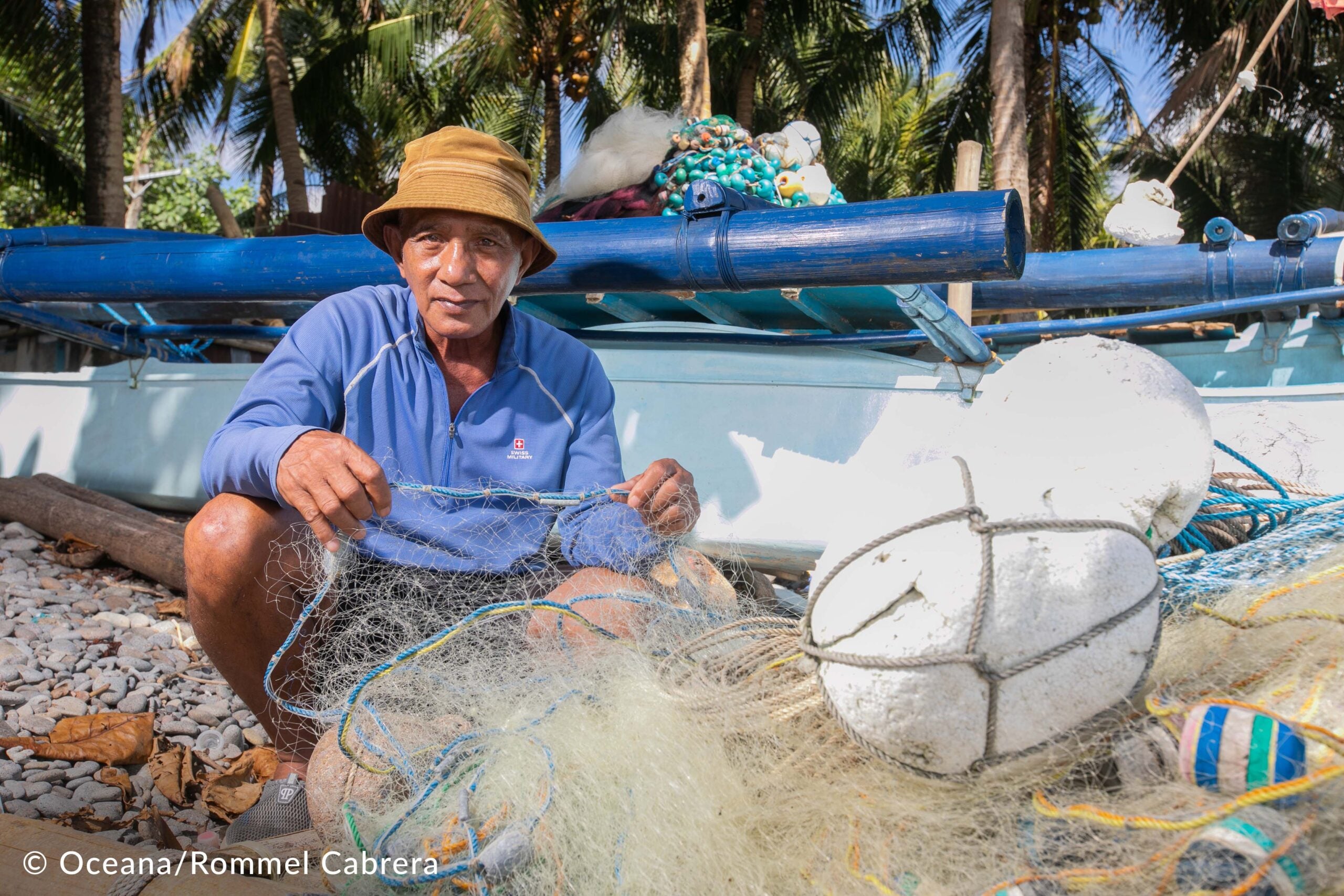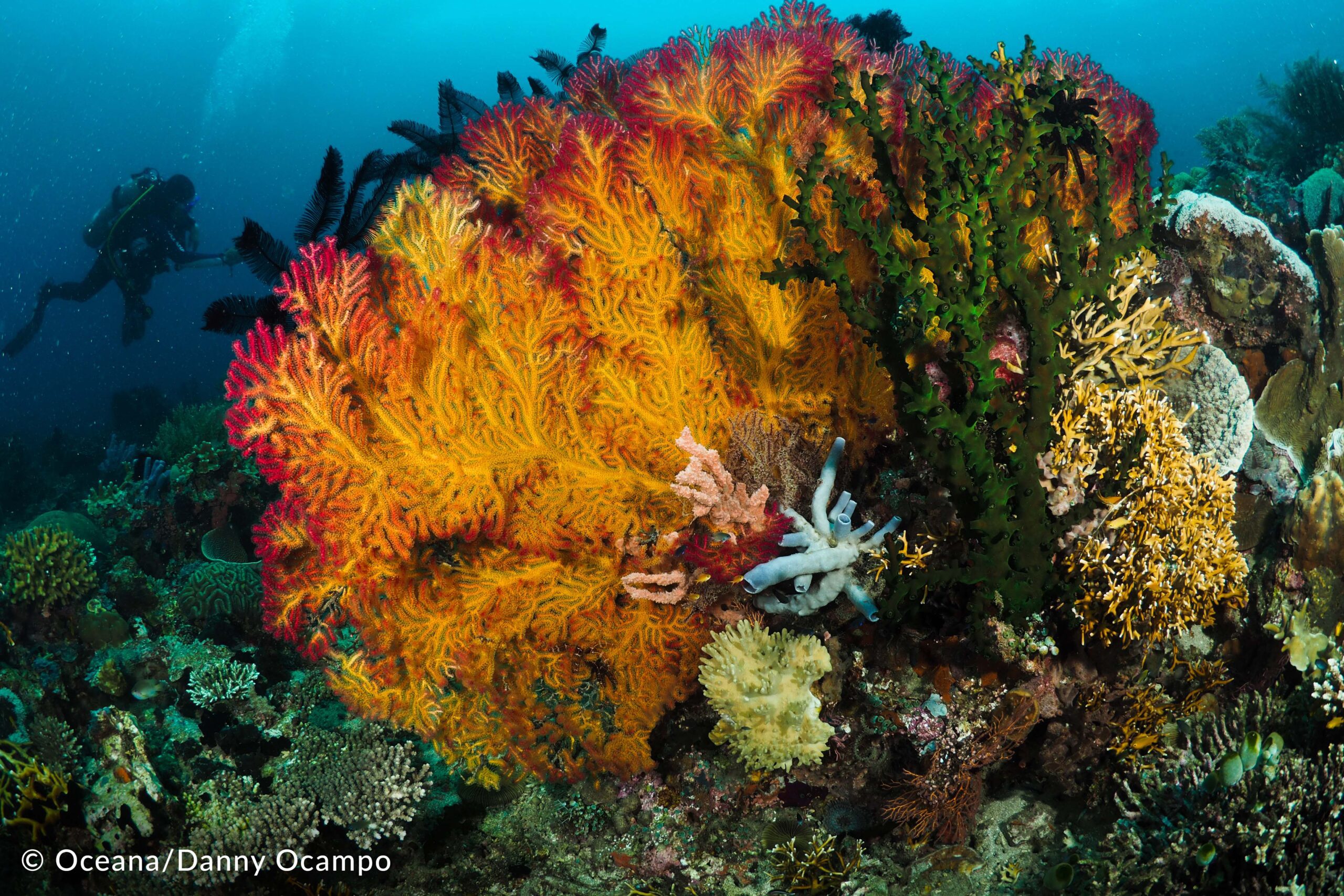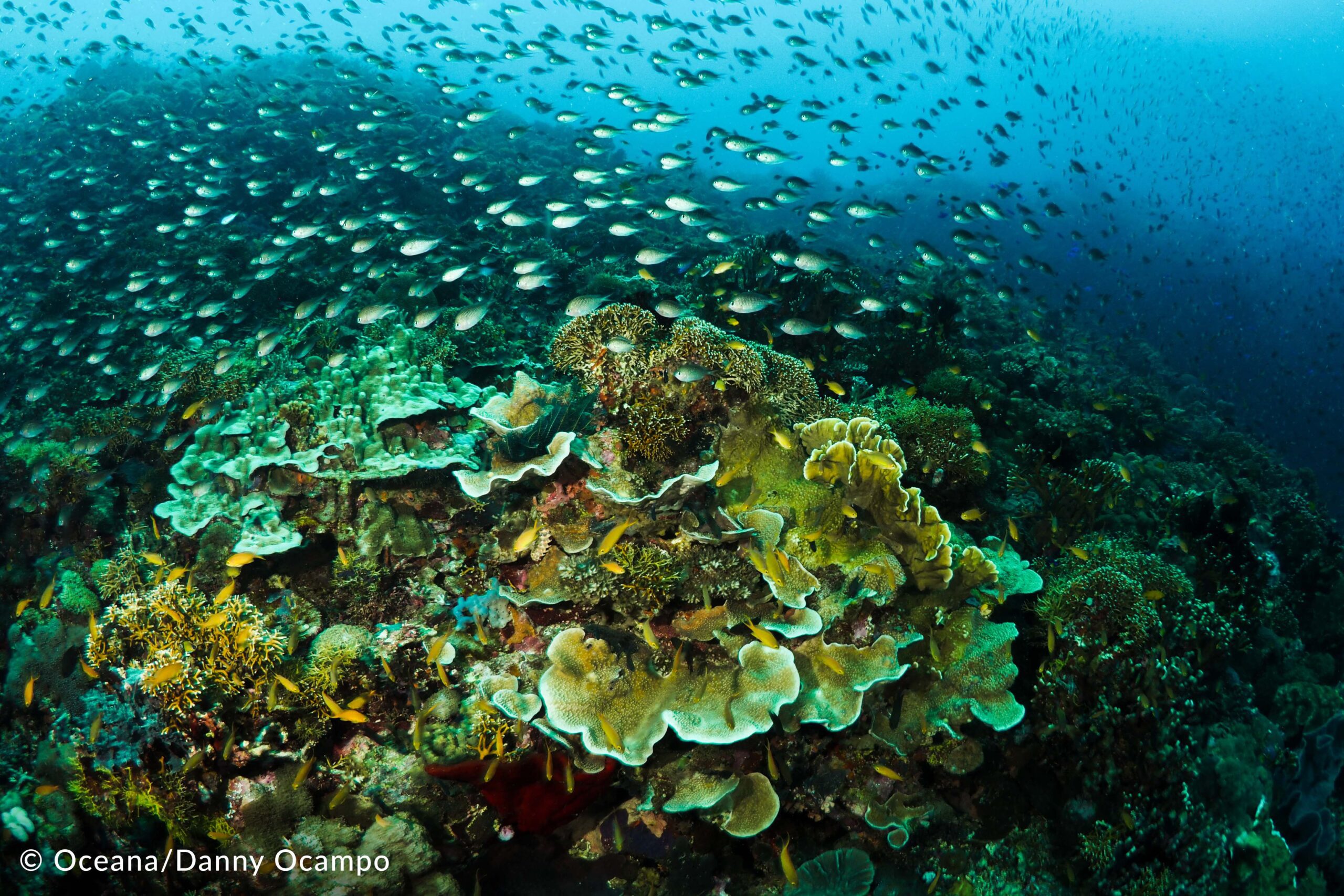Legislators, fisherfolk, NGOs call for enhanced coral reefs and marine habitat protection to fight climate crisis, support national protection of coral-rich Panaon Island in Southern Leyte
Press Release Date: November 29, 2021



As scientists, advocates and world leaders take notice of the negative impacts of rising temperatures, unabated habitat destruction, marine pollution, and harmful human activities that threaten coral reefs across the globe, legislators, fisherfolk, international advocacy group Oceana and other civil society groups rally behind measures for adequate protection to the few surviving reefs in the Philippines, a developing country considered to be one of the most vulnerable to climate change.
“Being among the Coral Reef Triangle countries, our government should prioritize coral reef protection and place it and marine ecosystems at the heart of our habitat conservation and protection efforts. To restore our vibrant and abundant marine resources, we need healthy coral reefs that will support marine life and allow these to thrive. We have to act fast to save the remaining good and excellent coral reefs of the Philippines which are at high risk to climate change and human exploitation,” said Oceana Vice President, Atty. Gloria Estenzo Ramos.
Oceana and its partners Phil. Earth Justice Center and Environmental Legal Assistance Center, the fisherfolk, the Southern Leyte province and municipalities, local governments and national agencies and the Management Body of the Fisheries Management Area 8, are working together with environment champions in the House of Representatives and the Senate to protect Panaon Island under the Expanded National Integrated Protected Areas Systems (ENIPAS) Act.
Following the 21-day expedition conducted by Oceana at the height of the COVID19 pandemic last year, the team found more than half of the coral reefs surrounding Panaon Island in good to excellent condition, with some areas enjoying at least 60% coral cover – a breakthrough amidst reports of the continued decline of the country’s coral reefs.
“One area that needs the Filipino people’s utmost support is Panaon Island, which deserves to be declared a marine protected area and be provided with national protection. Once declared as such, Panaon will enjoy the extensive protection and the effective preservation of its protected areas and be given more access to funding for protection programs,” said Deputy Speaker Loren Legarda, one of the principal authors of the Expanded National Integrated Protected Areas Systems (ENIPAS) Act during a virtual forum on November 23.
Likewise, Senator Cynthia Villar who is also a principal co-author of the ENIPAS Act and the chairperson of the Senate Committee on Environment, Natural Resources and Climate Change, said that she “welcomes the merits of having Panaon Island in Southern Leyte declared a protected area.”
“We take note of the Panaon’s rich marine diversity as discovered by Oceana in the recent expedition. The discovery serves as an eye-opener so that Panaon Island may be considered as a protected area and be brought within the coverage of the ENIPAS Act. As we are racing against time to protect as much of the country’s rich biodiversity, I am inclined to support a legislation according a protected area status to Panaon Island, and so I am urging the Department of Environment and Natural Resources, the communities, and the stakeholders like Oceana to forthwith start with the process of the protected area suitability assessment or PASA which is a mandatory requirement to legislate a protected area,” urged Villar.
In the same virtual forum attended by legislators, concerned officials from the national and local government, ocean conservation advocates, and local stakeholders including fisherfolks, Oceana with Philippine Earth Justice Center (PEJC) and Environmental Legal Assistance Center (ELAC) launched the primer on the ENIPAS Act that would aid in the implementation of the said law and a virtual exhibit showcasing the almost pristine coral reefs found in Panaon Island.
“Oceana’s initiative in producing a primer on ENIPAS comes at an opportune time when we need people to understand the value of protected areas to our lives, livelihood, well-being, and our ability to become resilient in the face of climate change. On behalf of ELAC and other colleagues, we take pride in being a part of this meaningful process,” said Atty. Gerthie Mayo-Anda, Executive Director of ELAC.
“One of the most common limitations is the manpower resource for enforcement of environmental laws in our MPAs. While government agencies have designated enforcers in these areas, it is also equally important to engage the communities ang involve them in enforcement mechanisms to help in monitoring and patrolling the MPAs. The ENIPAS Primer will be an instrument for strengthened education and information campaigns about the laws that are in place for the protection of our MPAs,” explained Atty. John Menguito, Managing Trustee of the PEJC.
“Making sure that people in the communities and the public in general are aware of the ENIPAS as the foundational law in the protection of our MPAs will start conversations about the issues affecting and surrounding our MPAs; encourage participation in several campaigns and activities to promote protection and conservation efforts; and ultimately, mobilize movements that will mold and develop more community volunteers and enforcers,” Menguito added.
This was echoed by Ramos who called the ENIPAS primer an indispensable tool which would safeguard the country’s marine protected areas and towards the collective goal of healing threatened marine habitats.
Published by Oceana, together with the Environmental Legal Assistance Center (ELAC) and the Philippine Earth Justice Center (PEJC), and with inputs from different stakeholders, the 61-page ENIPAS primer is a handy guide designed to be used by decision-makers, wardens and enforcers, civil society groups, and managers of the country’s Marine Protected Areas (MPAs). In particular, the primer aims to effectively communicate the salient features and frequently asked questions (FAQs) on the ENIPAS law in a language that is easy to understand.
MPAs are identified portions of land and/or water that are provided with protection due to their unique physical and biological diversity. Republic Act 11038 or the ENIPAS law, an amendment to the NIPAS Act of 1992, enhances state policies and legislations for all protected areas and provides for accountability of those mandated to protect the environment. This led to the legislation of an additional 94 protected areas, which brings the total number of the country’s protected areas to 244.
“The ENIPAS primer is a welcome development in our shared objective of promoting the protection of our marine protected areas. The ENIPAS hopes to strengthen climate adaptation mechanisms and the conservation of our country’s biodiversity. With this guide, I hope that measures aimed at protecting our country’s coral reefs will be given higher priority by the government personnel looking after the country’s prized marine protected areas,” urged Legarda.
Villar said that the ENIPAS Act Primer was a significant step in the efforts to raise public awareness on the significance of protected areas. “I believe that the more efficient we are in conserving our protected areas will bring us closer to the fulfilment of the State guarantee under our Constitution of protecting and advancing the right of the people to a balanced and healthful ecology.”
The virtual exhibit on Panaon Island which was likewise launched during the event features the breathtaking underwater photographs and a video documentary on the good to excellent coral cover that was discovered during the expedition in Panaon Island.
“Through these, we hope to inspire everyone into action. We must work together to save the coral reefs of Panaon Island. During the expedition, we documented the dangers surrounding Panaon Island’s coral reefs such as plastic pollution, ghost fishing, and the increasing number of crown-of-thorns starfish,” Ramos added.
Oceana mounted the Panaon Island virtual exhibit (link) to increase awareness on the benefits of protecting the country’s coral reefs and highlight the findings of the expedition. It presents the wide array of species of corals and marine animals that continue to thrive in Panaon Island.
Ocean Hero for 2021 and Ramon Magsaysay Awardee, Roberto “Ka Dodoy” Ballon stressed how important it is to provide coral reefs with sufficient safeguards as he shared their experiences in Zamboanga Sibugay.
“Sa karagatan nakasalalay ang ikinabubuhay naming mga mangingisda at malaki ang role ang coral reefs sa karagatan at sa kabuhayan namin dahil sa tumutulong ang mga ito sa pagdami ng isda na nabubuhay sa dagat. Kasama ninyo kaming mga mangingisda sa pagsuporta para sa mas pinaigting na proteksyon para sa Panaon Island. Hindi lamang ito para sa atin, para ito sa mga susunod pang henerasyon.”
(As fisherfolk, we depend on the bounty of the seas for our livelihood, and these coral reefs play an important role in ensuring an abundant catch. We are with you in the call for stricter protection for Panaon Island. This not only for our benefit but for the future generations as well.)
For More Information:
Joyce Sierra, Communications Manager, Oceana
Mobile: 09178214430 E-mail: jsierra@oceana.org
Facebook: www.facebook.com/oceana.philippines
Twitter: @oceana_ph Instagram: @oceana_ph
